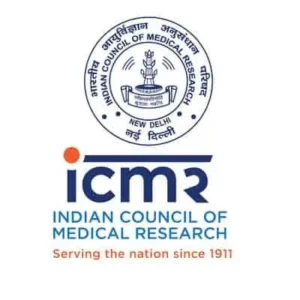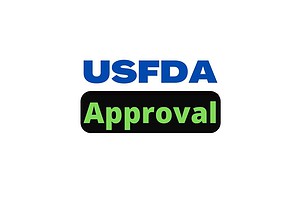Last Updated on October 10, 2024 by The Health Master
1. Biopharmaceutical
Biopharmaceutical stand at the forefront of medical innovation, offering groundbreaking treatments for various diseases.
However, the affordability of these medicines poses a significant challenge, as highlighted by Dr. Amaresh Tumbagi, Karnataka’s additional drugs controller.
2. The Complex Landscape of Biopharmaceutical Investments
2.1 Research: The Bedrock of Development
The process begins with extensive research, laying the foundation for innovative solutions.
2.2 Clinical Trials: Navigating the Regulatory Maze
Navigating through rigorous clinical trials is essential for ensuring safety and efficacy.
2.3 Manufacturing: A Cost-Intensive Endeavor
The production phase demands substantial investments to meet quality compliance standards.
3. Dr. Amaresh Tumbagi’s Perspective
3.1 Karnataka’s Additional Drugs Controller
Dr. Tumbagi sheds light on the intricate dynamics of biopharmaceutical affordability.
3.2 Affordability Challenges
Identifying the multifaceted challenges in making biopharmaceutical accessible to all.
4. Factors Influencing Biopharmaceutical Pricing
4.1 Research and Development Costs
Unpacking the pivotal role of R&D costs in determining the pricing structure.
4.2 Production Complexity
Examining how the intricate production process contributes to pricing challenges.
4.3 Regulatory Compliance
Understanding the impact of stringent regulatory requirements on drug affordability.
4.4 Intellectual Property Rights
The influence of patents and IP rights on the pricing dynamics of biopharmaceutical.
4.5 Limited Competition
Exploring the correlation between market competition and the affordability of drugs.
4.6 Supply Chain Challenges
Unraveling the challenges within the supply chain that affect drug pricing.
5. Innovative Pricing Models
5.1 Value-Based Pricing
A paradigm shift towards pricing models based on the value delivered to patients.
5.2 Outcome-Based Agreements
Exploring agreements tying pricing to the effectiveness of the treatment.
5.3 Subscription-Based Model
Examining the feasibility of a subscription-based approach to enhance accessibility.
5.4 Tiered Pricing
Implementing tiered pricing structures to cater to diverse economic landscapes.
5.5 Joint Procurement and Volume-Based Discounts
Collaborative approaches to procurement for better pricing outcomes.
5.6 Pooled Purchase and Benefit Sharing
Pooling resources and sharing benefits for a more equitable pharmaceutical landscape.
5.7 Licensing and Royalty Agreements
The role of licensing and royalty agreements in shaping drug prices.
5.8 Patent Pledges and Access Commitments
Ensuring accessibility through pledges and commitments post-patent expiry.
5.9 Trade Margin Rationalization
Rationalizing trade margins to address pricing challenges.
6. Country-Specific Pricing Models
6.1 Analyzing Strengths, Weaknesses, Opportunities, and Threats
The need for tailored pricing models based on individual country assessments.
7. Role of Biopharmaceutical in Patient Care
7.1 Gene Therapies and Novel Drug Approvals
Highlighting the pivotal role of biopharmaceutical in modern medical advancements.
7.2 Critical Component in Patient Care
Understanding the indispensable role of these medicines in patient care.
8. Resource-Intensive Development Process
8.1 Preclinical and Clinical Trials
Delving into the resource-intensive nature of preclinical and clinical trials.
8.2 Navigating Regulatory Hurdles
Challenges associated with regulatory compliance and their impact on development costs.
9. Passing Costs to Consumers
9.1 Higher Drug Prices
The economic implications of passing development costs to end consumers.
9.2 Industry Practices & Regulatory Expectations
Insights into prevailing industry practices and regulatory expectations.
10. Risks and Uncertainties in the Industry
10.1 Inherent Risks in Drug Development
Recognizing the inherent risks involved in the biopharmaceutical industry.
10.2 Uncertainty in Biopharmaceutical Industry
Navigating the uncertainties that contribute to the need for higher drug prices.
10.3 Need for Higher Prices
Understanding the rationale behind the necessity for elevated drug prices.
11. Time-Consuming Nature of Biopharmaceutical Development
11.1 Years-Long Development Process
The protracted timeline of biopharmaceutical development and its implications.
11.2 Impact of Inflation, Market Dynamics, and Policy Shifts
External factors influencing the ultimate pricing of biopharmaceuticals.
12. Patent Exclusivity and Pricing
12.1 Recovery of R&D Costs
The role of patent exclusivity in recuperating research and development investments.
12.2 Generic Competition Post Patent Expiry
The shift in pricing dynamics with the entry of generic alternatives.
12.3 Market Competition Impact on Prices
How market competition shapes the pricing of biopharmaceuticals.
13. Addressing Affordability Challenges
13.1 Advocating Transparent Pricing
The importance of transparent pricing in fostering affordability.
13.2 Encouraging Competition
Stimulating competition as a means to regulate drug prices.
13.3 Exploring Alternative Reimbursement Models
Innovative reimbursement models to address affordability issues.
13.4 Technological Advancements and Regulatory Changes
The role of technology and regulatory shifts in enhancing cost-effective drug development.
14. Conclusion
In conclusion, the intricacies of biopharmaceutical affordability demand a holistic approach. From understanding the investment landscape to exploring innovative pricing models, the path to accessible biopharmaceuticals involves collaboration, transparency, and adaptability.
Disclaimer: This article contains information derived from the source mentioned below. Our team utilized an AI language model to rewrite and present the news or article in a unique format.
FAQs
- Q: How do research and development costs impact the pricing of biopharmaceuticals?
- A: Research and development costs form a significant factor in determining the pricing structure, reflecting the investments made in innovation.
- Q: What role does patent exclusivity play in biopharmaceutical pricing?
- A: Patent exclusivity allows companies to recover research and development costs, impacting pricing dynamics until generic competition enters the market.
- Q: How can innovative pricing models contribute to affordability?
- A: Models such as value-based pricing, outcome-based agreements, and subscription-based approaches aim to align pricing with the value delivered and enhance accessibility.
- Q: Why is there a need for country-specific pricing models?
- A: Each country’s unique strengths, weaknesses, opportunities, and threats necessitate tailored pricing models for biopharmaceuticals.
- Q: What efforts are being made to address biopharmaceutical affordability challenges?
- A: Advocacy for transparent pricing, stimulating competition, and exploring alternative reimbursement models are among the ongoing efforts to address affordability challenges.
Drug recall: Dr Reddy’s recalls over 8,000 bottles of generic drug due to packaging error
NPPA fixed retail price of 19 formulations: January 2024
DCGI to Blood Centres: Comply with revised guidelines for recovery of processing charges
The Indian Pharmacopoeia Commission: Bidding for Pharmaceutical Impurities
Govt revises Schedule M: Revolutionizing Pharmaceutical Manufacturing
New class of antibiotics developed to fight drug-resistant bacteria
USFDA approval granted for this generic drug to treat diabetes
Gujarat FDCA: Obtain Online Non Conviction and Performance Certificates
CDSCO Directs GSK to Submit Data for Belantamab Mafodotin Trial
For informative videos by The Health Master, click on the below YouTube icon:
For informative videos on Medical Store / Pharmacy, click on the below YouTube icon:
For informative videos on the news regarding Pharma / Medical Devices / Cosmetics / Homoeopathy etc., click on the below YouTube icon:
For informative videos on consumer awareness, click on the below YouTube icon:












